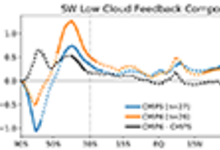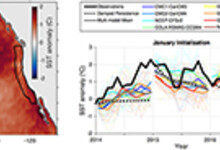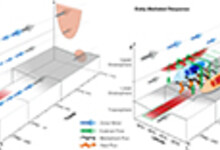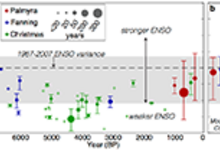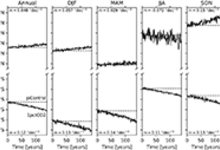Research Highlights
We aim to feature the latest research results from US scientists whose published paper features work that is sponsored by one or more sponsoring agency programs of US CLIVAR (NASA, NOAA, NSF, DOE, ONR). Check out the collection of research highlights below and sort by topic on the right. Interested in submitting an article for consideration? See our Research Highlight Submission Guidelines page for more information.
Zelinka and coauthors compared ECS values derived from CO2 quadrupling experiments conducted with CMIP6 and CMIP5 models and found that the latest models warm more than their predecessors by about 0.5˚C. The primary culprit for the enhanced warming was shown to be clouds.
A recent study uses large ensembles of an idealized general circulation model to demonstrate how episodic surface warming in the Arctic can lead to delayed responses in the stratosphere that persist for about two months, even in the absence of stationary waves.
Comparison of fossil corals samples with modern corals showed that the recent ENSO intensification was quite apparent – the most recent 20 years was stronger than almost all 20-year periods measured over the entire preindustrial fossil coral dataset.
Under exclusive CO2 forcing, climate models predicted twice as much Hadley cell expansion in the Southern Hemisphere as in the Northern Hemisphere. The finding was robust across models and all seasons except boreal fall.

